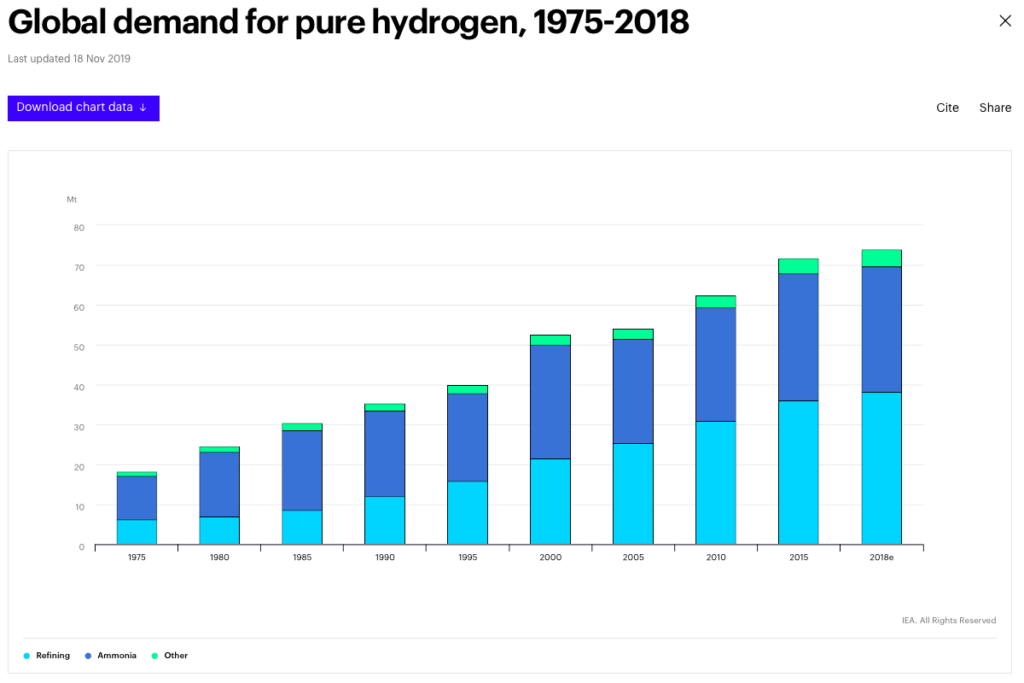Updating the literature: Ammonia consumes 43% of global hydrogen
By Trevor Brown on January 03, 2020
For years, many people — myself included — have been saying that ammonia consumes 55% of the hydrogen produced around the world. Although there are many authoritative sources for this figure, I knew that it was likely out of date. (I cited the 2017 Shell Hydrogen Study, which cited a 2010 source, and I had not found a better number.)
Until now, I had overlooked the International Energy Agency (IEA) 2019 report, The Future of Hydrogen, which provides up-to-date (and publicly downloadable) data for global hydrogen demand since 1975. According to the IEA, ammonia represented almost 43% of global hydrogen demand in 2018; refining represented almost 52%, and “other” demands accounted for 6%.

The old 55% figure holds true, in the IEA’s data, for the year 2000. The underlying data can be downloaded from the IEA’s website but, in case it helps, here’s a summary table, showing the three main global demand categories for hydrogen (refining, ammonia, and other) in units of millions of metric tons.
| 1975 | 2000 | 2018 | ||||
| Other | 1.1 | 6.0% | 2.5 | 4.8% | 4.2 | 5.7% |
| Ammonia | 10.9 | 59.9% | 28.6 | 54.5% | 31.5 | 42.6% |
| Refining | 6.2 | 34.1% | 21.4 | 40.8% | 38.2 | 51.7% |
| Total | 18.2 | 52.5 | 73.9 |
For what it’s worth, this IEA data is closely consistent with another statistical dataset I use, the US Geological Survey’s Mineral Yearbook: Nitrogen (USGS). USGS estimates that global ammonia production in 2018 was 180 million metric tons (note that USGS gives data in units of nutrient weight not product weight, so we must convert the given nitrogen data to find ammonia data). With a hydrogen content by weight of 17.8%, 180 million tons of ammonia would require 32 million tons of hydrogen — closely consistent with the IEA’s 31.5 million metric tons of hydrogen estimated for 2018.
Now, we can all update our ammonia market facts by 20 years, starting with me.